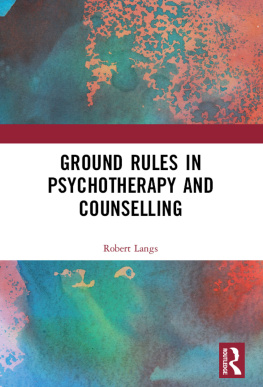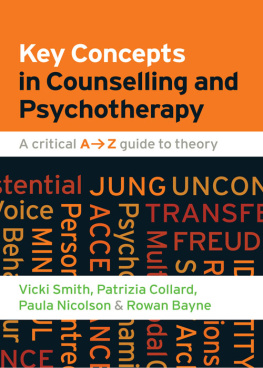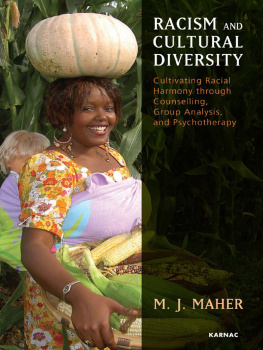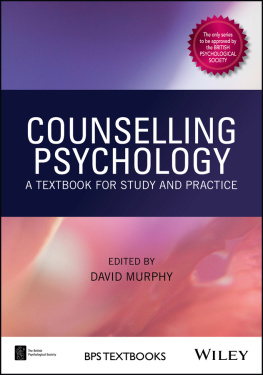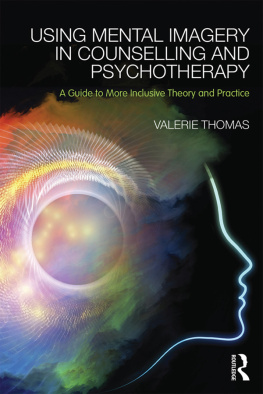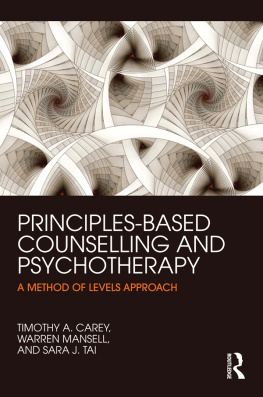Langs Robert - Ground Rules in Psychotherapy and Counselling
Here you can read online Langs Robert - Ground Rules in Psychotherapy and Counselling full text of the book (entire story) in english for free. Download pdf and epub, get meaning, cover and reviews about this ebook. publisher: Routledge, genre: Home and family. Description of the work, (preface) as well as reviews are available. Best literature library LitArk.com created for fans of good reading and offers a wide selection of genres:
Romance novel
Science fiction
Adventure
Detective
Science
History
Home and family
Prose
Art
Politics
Computer
Non-fiction
Religion
Business
Children
Humor
Choose a favorite category and find really read worthwhile books. Enjoy immersion in the world of imagination, feel the emotions of the characters or learn something new for yourself, make an fascinating discovery.
- Book:Ground Rules in Psychotherapy and Counselling
- Author:
- Publisher:Routledge
- Genre:
- Rating:4 / 5
- Favourites:Add to favourites
- Your mark:
- 80
- 1
- 2
- 3
- 4
- 5
Ground Rules in Psychotherapy and Counselling: summary, description and annotation
We offer to read an annotation, description, summary or preface (depends on what the author of the book "Ground Rules in Psychotherapy and Counselling" wrote himself). If you haven't found the necessary information about the book — write in the comments, we will try to find it.
Ground Rules in Psychotherapy and Counselling — read online for free the complete book (whole text) full work
Below is the text of the book, divided by pages. System saving the place of the last page read, allows you to conveniently read the book "Ground Rules in Psychotherapy and Counselling" online for free, without having to search again every time where you left off. Put a bookmark, and you can go to the page where you finished reading at any time.
Font size:
Interval:
Bookmark:

GROUND RULES IN PSYCHOTHERAPY AND COUNSELLING

Robert Langs
GROUND RULES IN PSYCHOTHERAPY AND COUNSELLING
Robert Langs

First published 1998 by Karnac Books Ltd.
Published 2018 by Routledge
2 Park Square, Milton Park, Abingdon, Oxon OX14 4RN
711 Third Avenue, New York, NY 10017, USA
Routledge is an imprint of the Taylor & Francis Group, an informa business
Copyright 1998 Robert Langs
The rights of Robert Langs to be identified as author of this work have been asserted in accordance with 77 and 78 of the Copyright Design and Patents Act 1988.
All rights reserved. No part of this book may be reprinted or reproduced or utilised in any form or by any electronic, mechanical, or other means, now known or hereafter invented, including photocopying and recording, or in any information storage or retrieval system, without permission in writing from the publishers.
Notice:
Product or corporate names may be trademarks or registered trademarks, and are used only for identification and explanation without intent to infringe.
British Library Cataloging in Publication Data
A C.I.P. record for this book is available from the British Library.
ISBN 9781855751712 (pbk)
Edited, designed, and produced by Communication Crafts
I am indebted once again to James Raney, M.D., who, with great sensitivity and acumen, edited this book
CONTENTS
PART ONE
The universal attributes of therapy frames
PART TWO
The specific ground rules
T hroughout the history of the universe, frames, contexts, rules, and boundaries have been vital aspects of the development and very existence of both physical structures and living organisms (deDuve, 1995; Langs, 1996).
On the material side, both large and infinitely small entities are bounded, defined contextually, and constrained by rules and regularities. The most basic set of rules take form as the laws of nature that give the universe its determinism and predictability, chaotic and otherwise. Even quantum-related events, which apply to the fundamental particles of nature and have an ultimate degree of uncertainty, are nevertheless lawful.
The consistencies and certainties defined by rules and laws are buttressed by the physical boundaries that define material conglomerates. Boundaries have also played a vital role in the evolution of the universe. It was, for example, the bounding of a chaotic mass of energy and matter that created the earth some 10 billion years ago. On all levels of physical organization, then, order is the essential grounding for disorder, development, evolution, creativity, and the emergence of new forms (Langs, Badalamenti, & Thomson, 1996; Prigogine & Stengers, 1984).
As for living organisms, contexts, frames, rules, and laws have governed their development, functions, activities, and adaptations from the first moment of their emergence. On the most fundamental level, organisms are governed by the physical laws of nature and, in addition, by regularities and patterns that are uniquely characteristic of biological processes. As organisms move up the evolutionary scale and become increasingly complex, instinctive and then consciously fashioned rules of behaviour and coping have been forged as supplements to the natural laws on which they are grounded. Here, too, contextual order is essential for both smooth functioning and organismic development.
In humans, rules and laws of behaviour and conduct, moral and otherwise, govern actions and interactions with others. Taking form both explicitly and implicitly, these rules are fashioned and reshaped under the influence of both conscious and unconscious needs and forces. Rules are essential to the creation of a relatively stable and predictable environment of a kind that sustains life, protects an individual from harm, and supports adaptive effortsrules define and safeguard self, relationships with others, and interpersonal transactions. Every situation and relationship that an individual comes upon is affected by a contextual set of biologically, socially, and individually determined ground rules. Humans also have the capability of choosing, consciously and/or unconsciously, to adhere to or violate these rules, doing so under considerable unconscious influence.
With respect to boundaries, biological boundaries or borders define and afford separate identity to a vast panoply of microscopic and macroscopic organisms. Boundaries stand as vital lines of contact between whatever lies within an organism and whatever lies outside it. These defining edges exist within entities and delineate their components, as well as between entities and their environments, which include physical features and other living beings. The importance of boundaries is seen, for example, in the fact that the creation of the cell boundary was the essential emergent event that enabled life to materialize some 4 billion years ago from the unbounded chemical soup that was its matrix. Indeed, the preservation of this same boundary is a sine qua non for a cells survival.
In living beings, boundaries are by no means inert or passive: they are extremely active sites. They operate as highly selective and influential envelopes and membranes that are the locus of life-sustaining incorporative and excretory metabolic and other activities. In higher organisms, the proper management of boundary conditions and transactions is critical for successful adaptation and survival. Boundary conditions also affect the status and operations of the elements and entities within their confines. The properties of boundaries are of such great import that their measurement yields decisive information about the operations and state of the systems that they contain. In living organisms, boundaries define, regulate, and shape the activities that transpire within their territories.
Because they function as both borders and sites of critical metabolic processes, boundaries defy the usual distinctions between figure and ground, container and contained, defining structure and operational component. They are both the context for adaptation and adaptational entities themselves. In addition, they serve to keep an organism both separate from and merged with its environment. For humans, boundaries have both physical and psychological featuresintrapsychic and interpersonal. The importance of boundaries for living entities cannot be overestimated.
Contexts, frames, and frameworks are terms that refer broadly to the conditions within and under which living organisms exist, function, relate, and adapt. Context is the broader term in that it refers to the physical and psychological circumstances of existing and interacting, including historical aspects, role definitions, rules, and other conditional features. Frames are contexts that can be altered and managed through framing activities and interventions.
Contexts and frames may be relatively fixed or in flux and changing, as seen when a couple moves from a friendship to an engagement to a marriage. As both physical settings and emotionally charged, psychological configurations, contexts and frames provide definitive, environmentally relevant background information and meaning
Font size:
Interval:
Bookmark:
Similar books «Ground Rules in Psychotherapy and Counselling»
Look at similar books to Ground Rules in Psychotherapy and Counselling. We have selected literature similar in name and meaning in the hope of providing readers with more options to find new, interesting, not yet read works.
Discussion, reviews of the book Ground Rules in Psychotherapy and Counselling and just readers' own opinions. Leave your comments, write what you think about the work, its meaning or the main characters. Specify what exactly you liked and what you didn't like, and why you think so.

